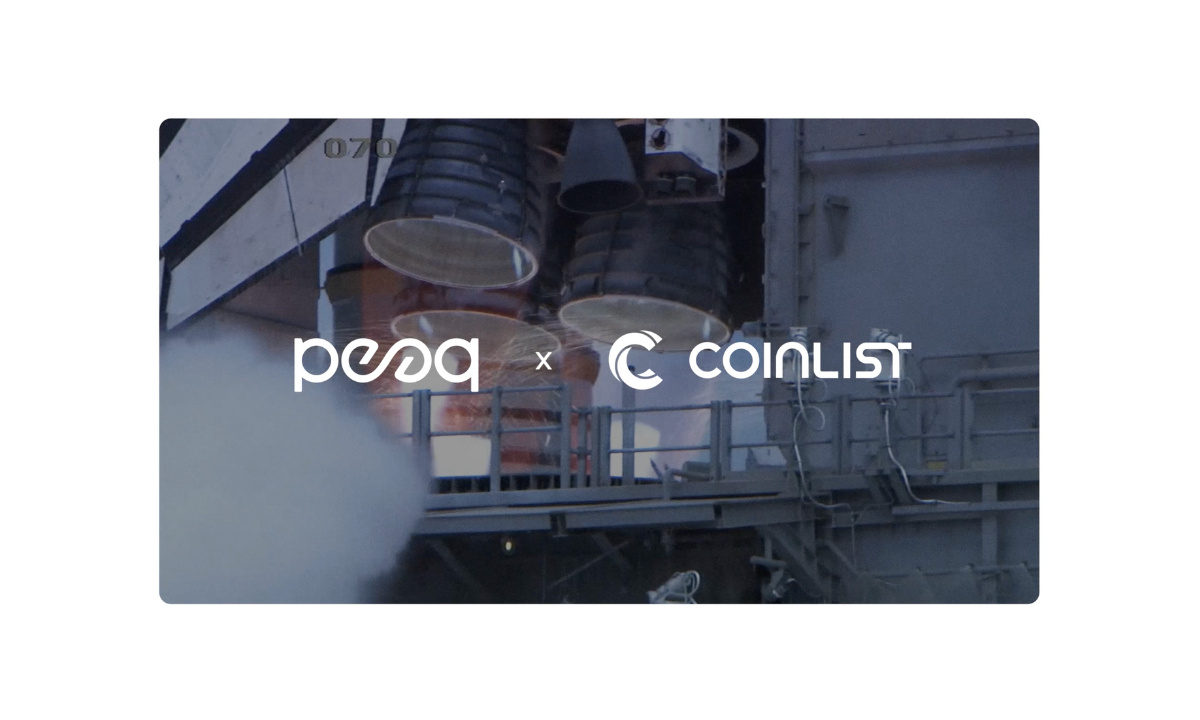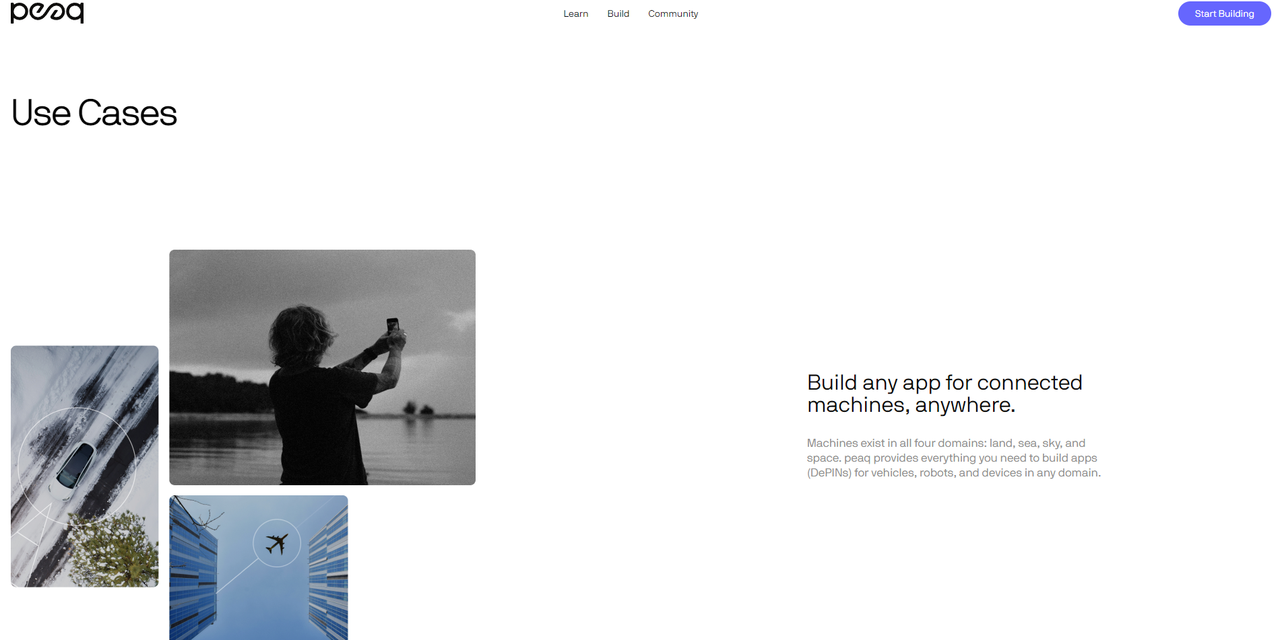According to the latest report from CoinList, the DePIN Layer1 protocol Peaq completed a $20 million fundraising activity through CoinList on May 17, attracting participation from over 14,500 community members and raising a total of over $36 million, oversubscribing the token issuance of peaq. This event became the largest and highest fundraising activity in terms of scale and donation amount for CoinList in over two years. The new funds will mainly be used to ensure that the DePIN based on peaq becomes an industry leader, accelerate the development of the peaqosystem, and promote various ecosystem and community plans.
In addition, Peaq announced the launch of its native token PEAQ on CoinList from May 9 to May 16. However, users from the United States, Canada, China, South Korea, and other regions will not be able to participate in this token issuance. Meanwhile, Peaq is actively preparing to launch its mainnet to further drive the development of its ecosystem.

As early as March this year, Peaq completed a $15 million financing, led by Generative Ventures and Borderless Capital, with participation from several well-known institutions such as Spartan Group, HV Capital, CMCC Global, and Animoca Brands. These funds will be used to expand the Peaq ecosystem, which consists of more than 20 DePIN projects covering areas such as multi-chain machine ID, AI agents, and data verification.
As Peaq's ecosystem continues to expand and innovate, the emerging field of DePIN is also rapidly developing and growing. The following will explore in detail how Peaq is driving the development and application of DePIN through its unique technology and ecosystem.
Introduction to the peaq platform: Innovative DePIN solution, focusing on the Internet of Things economy
peaq is a Web3 network focused on decentralized physical infrastructure network (DePIN), supporting the Economy of Things (EoT). Its network can scale to over 10,000 transactions per second (TPS) with transaction costs as low as $0.00025, suitable for building DePIN and dApps. peaq provides features such as autonomous machine ID, role-based access control, seamless machine payment processing, machine data storage, machine NFTs, data indexing, autonomous AI agents, and seamlessly interacts with Polkadot, Cosmos, Solana, and Ethereum, enhancing the interoperability of the Web3 ecosystem.
Team and Financing:
peaq was co-founded by Till Wendler, Leonard Dorlochter, and Max Thake, who have extensive experience in blockchain and the Internet of Things field. In June 2022, peaq completed a $6 million financing led by Fundamental Labs, and in March 2023, it received a $15 million financing led by Generative Ventures and Borderless Capital. In May 2024, peaq completed a $20 million fundraising through CoinList, attracting participation from over 14,500 community members and raising over $36 million, making it the largest fundraising activity for CoinList in recent years.
Operation Principle:
The uniqueness of peaq lies in its technology architecture and economic model tailored for DePIN and the Internet of Things (IoT) economy. Its core operating principles include:
High scalability and low transaction costs: The peaq network can support over 10,000 TPS and is planned to expand to over 100,000 TPS in the future. This capability is due to its asynchronous support and elastic scaling technology, allowing the network to process a large number of concurrent transactions without sacrificing performance. At the same time, the cost of each transaction is only $0.00025, ensuring economically efficient operations;

Autonomous machine ID: peaq provides an autonomous machine identity (ID) system, allowing each connected device to have an independent, autonomous identity. These IDs are verified through the blockchain, ensuring secure and reliable interactions between devices. This system is particularly suitable for IoT applications requiring high security and trust, such as smart transportation and industrial automation;
Role-based access control: peaq implements a role-based access control (RBAC) mechanism, ensuring that only authorized users and devices can access specific resources and functions. The RBAC system is managed through smart contracts, providing flexible and customizable access permission settings;
Data storage and validation: The peaq network supports distributed data storage and data validation functions, ensuring the integrity and security of data during transmission and storage. By using decentralized storage solutions, peaq can effectively manage and protect a large amount of IoT data;
Economic model and incentive mechanism: peaq adopts a specially designed economic model aimed at incentivizing various participants in the network. Whether it's node operators, device owners, or application developers, they can contribute computing resources, data, and services on the network to receive rewards. These incentives mainly come from transaction fees and block rewards, promoting the formation of a healthy, active ecosystem.
Use Cases:
In specific applications, peaq supports multiple DePIN use cases, including peer-to-peer electric vehicle charging, decentralized car sharing, wind and solar energy trading, smart traffic monitoring, and air quality monitoring. These applications demonstrate the enormous potential of peaq in driving the development of decentralized physical infrastructure networks. Through these applications, peaq not only provides solid technical support but also demonstrates its wide-ranging possibilities in the real world. The next step will explore how peaq is further driving the development and application of DePIN through its unique technology and ecosystem.
peaq's three-token economic model: Dynamically maintaining the stability of ecosystem value
As an innovative platform for decentralized physical infrastructure networks (DePIN), peaq has launched three token systems: the mainnet token $PEAQ, the Canary network token $KREST, and the testnet token $AGUNG. These three tokens play a crucial role in the peaq ecosystem, ensuring the efficient operation of the network and active community participation.
Multiple functions of the $PEAQ token:
$PEAQ is the native token of the peaq network, mainly used for the following purposes:
Transaction fees: All transactions on the peaq network require the use of $PEAQ tokens for payment. This includes not only basic transaction fees but also the deployment costs of EVM or ink! smart contracts on the network;
Network operation: Users need to stake $PEAQ to set up validator nodes, which is a key part of the peaq consensus mechanism. Delegators also need to use $PEAQ to support selected validators and receive partial rewards from them;
Network governance: $PEAQ holders can vote on key decisions for the development and future of the peaq network through on-chain governance, thereby exercising ownership of the peaq network;
Reputation system: Machine owners and operators can stake $PEAQ on their machines to guarantee their credibility.
The peaq network adopts a deflationary model, with an initially set inflation rate of 3.5%, decreasing by 10% each year until stabilizing at 1%. This model not only ensures incentives for early adopters but also ensures the long-term health and stability of the network.
Application Scenarios of $KREST Token:
The $KREST token is used for the Canary network krest of peaq, with economic parameters similar to the peaq mainnet but with some differences. The krest network is mainly used for testing and experimentation to ensure the security and stability of updates and new features for the peaq mainnet.
The allocation of $KREST tokens on the krest network is as follows:
EoT Labs team: 5%
Reserve fund: 12.5%
Early supporters: 5%
Core time leasing: 20%
Treasury: 10%
Adoption program: 22.5%
Community activities: 25%
These allocations ensure the continuous development of the krest network and active community participation. The economic model of the krest network aims to incentivize various participants, including machine owners and dApp builders, to actively use the network and participate in its ecosystem development.
Use of $AGUNG Token:
$AGUNG is the token for the peaq testnet, mainly used to facilitate the development and testing of the Agung testnet. Unlike $PEAQ and $KREST, the $AGUNG token can be obtained for free and is used for testing and experimental purposes. This design ensures that developers can conduct safe experiments in the testnet environment without affecting the stability of the mainnet.
Advantages of the Three-Token System:
The three-token system of peaq is ingeniously designed to ensure the efficient operation of the network and widespread community participation. The $PEAQ, $KREST, and $AGUNG tokens play different roles in the mainnet, Canary network, and testnet, but together provide a solid economic foundation for peaq's decentralized physical infrastructure network. This design not only enhances the security and stability of the network but also lays the foundation for future expansion and innovation. As more projects join the peaq network, this three-token system will further promote the development of DePIN projects, making them stand out in the Web3 field.
In the era of the Internet of Things, can the launch of the peaq mainnet bring about a complete transformation?
As an innovative platform for decentralized physical infrastructure networks (DePIN), the peaq network is committed to bringing the Internet of Things (IoT) into the Web3 era. Against the backdrop of Web2 companies continuing to collect and control user data in a centralized manner, the peaq network is striving to change this situation through its unique technology and diverse application scenarios.
The peaq network supports over 300,000 devices and has locked over $25 million in real-world assets (RWA), successfully bridging the gap between the physical world and the Web3 digital world. Last May, the peaq network announced the introduction of Tesla and decentralized car-sharing applications into the Polkadot ecosystem, aiming to connect car owners and smart driving devices through on-chain technology, creating a future Web3 car-sharing platform and ushering in a new era of IoT development. Currently, over 25 DePIN projects have been successfully deployed on the peaq network.
As one of Polkadot's parachains, the peaq network supports the IoT economy, helping entrepreneurs and developers build decentralized applications, allowing users to exercise management and profit rights on these connected machine devices, truly realizing human-machine collaboration in the era of artificial intelligence. The peaq network also ensures user data autonomy and management rights through distributed storage and data management, achieving efficient and transparent operations. The peaq network provides a range of functional modules such as peaq ID, peaq Access, peaq Pay, and peaq Control, enabling developers to easily develop DePIN projects and receive corresponding device profits.
With the imminent launch of the peaq network mainnet, its ecosystem will further expand, attracting more DePIN projects and developers to participate. The peaq network has already integrated with the cross-chain protocol Wormhole, facilitating the interaction of funds and liquidity between the peaq ecosystem and BNB Chain, Ethereum, Polygon, and others. Despite the bright prospects, the peaq network still faces many uncertainties in advancing these innovations.
Market conditions, technological developments, and changes in user demand could all have a significant impact on its future. Whether the peaq network can continue to lead the trend in the IoT economy will require time to test, but it has already taken a solid step on the path of integrating Web3 and the Internet of Things.
免责声明:本文章仅代表作者个人观点,不代表本平台的立场和观点。本文章仅供信息分享,不构成对任何人的任何投资建议。用户与作者之间的任何争议,与本平台无关。如网页中刊载的文章或图片涉及侵权,请提供相关的权利证明和身份证明发送邮件到support@aicoin.com,本平台相关工作人员将会进行核查。



